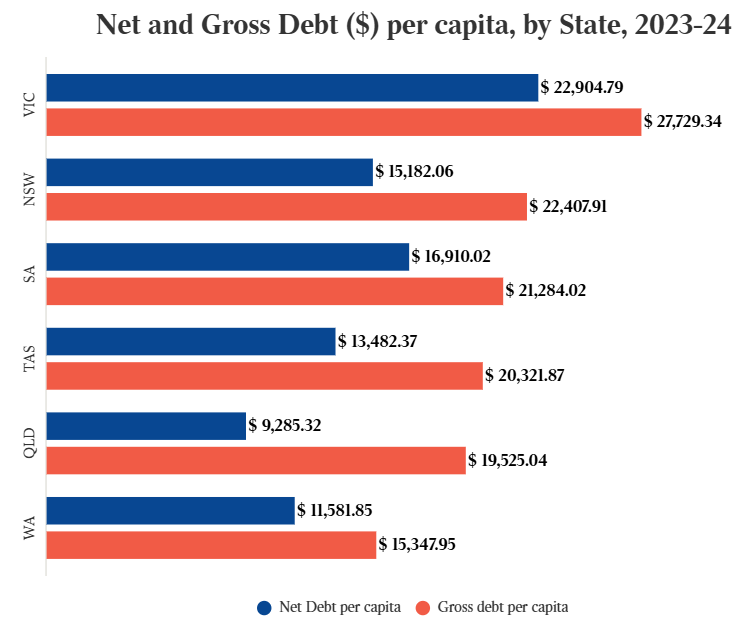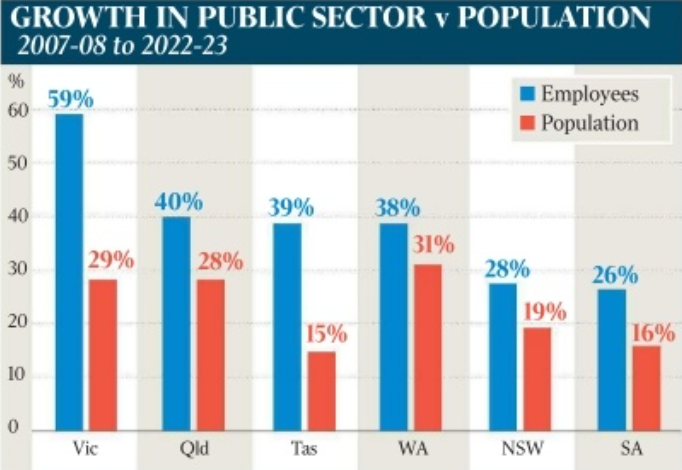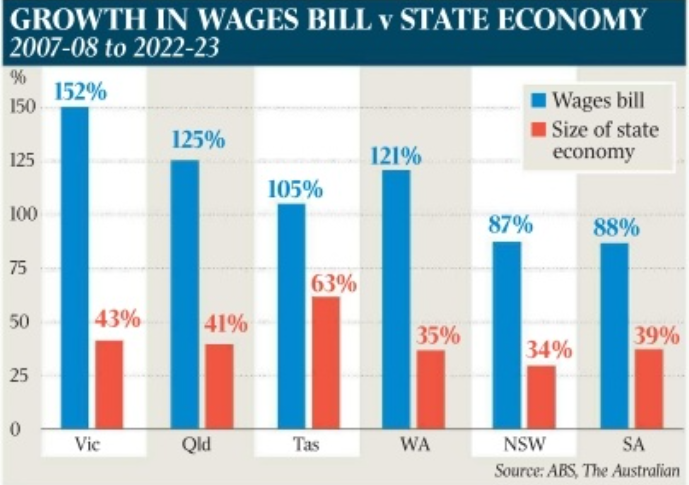Victoria has the highest per capita debt in the nation and the lowest credit rating.

Last week’s budget update showed that Victoria’s net debt has ballooned from $36 billion to $155 billion over the past decade. The state’s net debt is projected to rise to $187 billion over the next three years.

The expansion of Victoria’s public service is a major contributor to the state’s increasing debt.
Employee expenses are Victoria’s largest expense. Two important determinants of employee expenses are wage growth and the number of employees.
In the 15 years leading up to 2022–23, Victoria’s public sector headcount rose by 59%, dwarfing the state’s population growth of 29%.

Source: The Australian
The state’s public servant wage bill increased by 152% over the same 15-year period, far surpassing the other Australian states.

Source: The Australian
According to the budget update, employee expenses (including superannuation) are forecast to be $42.4 billion in 2024–25. Average growth over the forward estimates of 3.1% a year is forecast.
Indeed, the following chart from Stuart Wemyss on Twitter (X) shows that Victoria has raised annual taxes by $20 billion over the past decade. However, every dollar of it has been spent on public sector wages, resulting in Victoria having a bloated public service costing over $42 billion.

Dozens of senior public workers will receive hefty pay increases after Victoria’s Independent Remuneration Tribunal (IRT) approved salaries far exceeding the statutory limits.
For example, the maximum compensation for the incoming chief executives of the Development Victoria agency and the government’s investment arm, Breakthrough Victoria, is $534,000. However, the IRT has approved salaries of $650,000 and $600,000, respectively.
Other senior public sector positions will see significant pay increases, including the director of the Victorian Infrastructure Delivery Authority, who will be paid $30,000 more, and the head of asset classes at Victorian Funds Management Corporation, who will be paid up to $495,000, $216,000 more than the previous band.
Last month, Victoria’s Suburban Rail Loop Authority paid an average salary of $332,000 to 102 executives in 2023-24, costing taxpayers $32.9 million.
The two major credit rating agencies, S&P and Moody’s, warned Victoria that if it does not control its debt, it risks further downgrades.
As a result, the last thing Victorian taxpayers need is for the state bureaucracy to expand even further.

